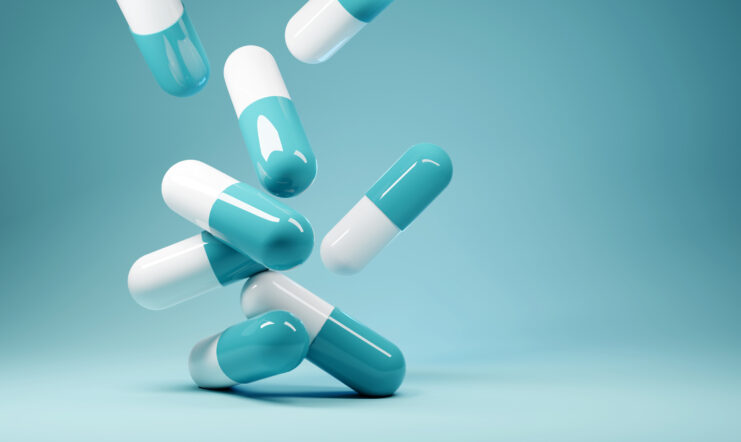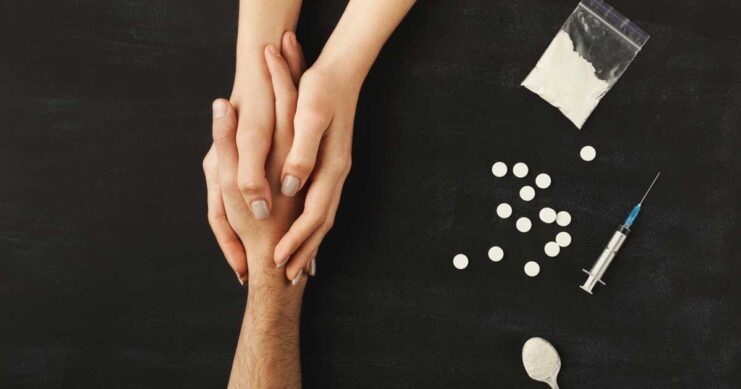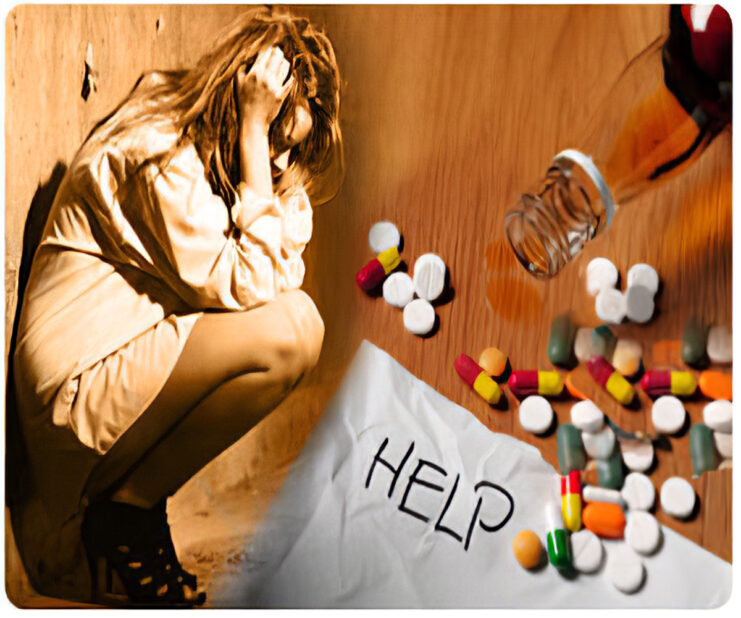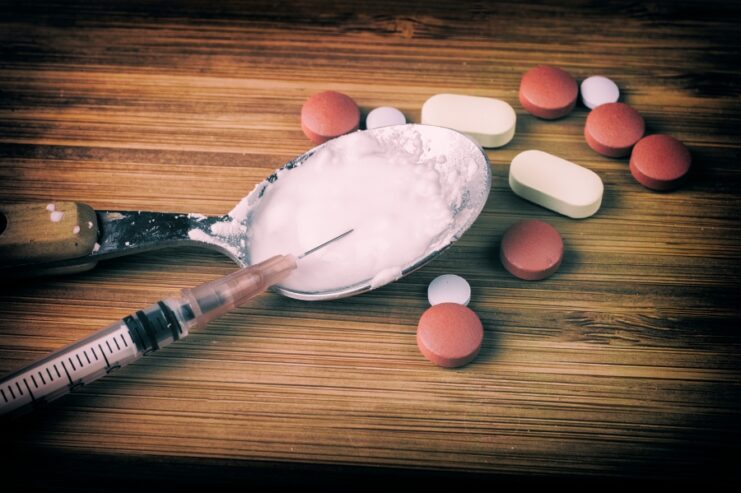Opioid addiction or opioid abuse is a chronic medical condition characterised by compulsive use, even when the person wants to stop or when the opioid negatively affects the person’s physical and emotional well-being. Though doctors prescribe opioids to relieve pain, their illegal use creates long-term changes in the brain and may lead to opioid addiction.
According to statistics, in 2021, approximately half of all drug poisoning deaths registered involved an opiate. Also, like any other substance use disorder, opioid addiction displays specific symptoms and a pattern of progression. Luckily, early intervention for addiction recovery can help avoid long-term health conditions associated with the use of opioids. In addition, suitable opioid addiction treatment options may help bring it under control.
This article will help you learn about opioid addiction, its causes, symptoms, and treatment options.
What Causes Opioid Addiction?

While there is no single reason why some people become addicted to opioids, and other do not, experiencing euphoria may be one of the warning signs of vulnerability to opioid addiction. Typically, opioids are used to reduce pain, and for some people, it generates a euphoric feeling. Euphoria is a mental state where people feel a sense of heightened well-being, and it can even occur in people using opioids in advised doses.
In the early stages of opioid addiction, people use the drug to get a pleasurable effect, but the pleasant sensations diminish over time. It is the point where a person develops a tolerance. It means they take opioids more frequently or at higher doses to restore euphoria or to avoid withdrawal symptoms.
Also, regular use of opioids increases the risk of developing opioid abuse. While taking an opioid for a day or two doesn’t harm anyone, it may cause physiological effects even after the first dose. Nonetheless, it also takes time to become physically dependent on opioids, but it varies from person to person.
Symptoms of Opioid Abuse

Opioid abuse is characterised by various symptoms, such as:
Physical Dependence: Physical dependence is a physiological change that occurs when an individual uses a substance in higher doses and experienced withdrawal symptoms, such as cravings and sweating, when they stop using it. Also, it is crucial to understand that an individual can be physically dependent on opioids without unhealthy use. For example, opioids relieve pain in cancer patients, but it doesn’t mean that patients are addicted to opioids.
Heavy, Frequent, or Unhealthy Use: A person with an opioid use disorder continues the use even when it disrupts their health, safety, financial security, and personal relationships. Hence, it becomes uncontrollable for an addicted person to stop using opioids and change their behaviour.
Sometimes, an opioid addict may not show signs straightaway, but a few signals to identify if a person needs help include:
- Weight loss
- Changes in sleep habits
- New financial difficulties
- Changes in exercise habits
- Lack of hygiene
- Decreased libido
- Frequent flu-like symptoms
- Drowsiness
- Stealing from family members, friends, and businesses
- Isolation from loved ones
Opioid Addiction Treatment
Opioid abuse is a complex disease and requires effective treatment plans for higher recovery rates. However, no single approach works well for opioid addiction treatment, and a person has to go through multiple therapies before finding the right one. Available at health care professionals and certified drug rehabs, treatment for opioid abuse may be provided on an outpatient and inpatient basis, depending on the severity of the addiction and the needs of an individual. A proper combination of treatment programs for treating opioid addiction includes detoxification, counselling, and medications.
Detoxification

The first part of every addiction treatment process involves detoxification. It is a process where withdrawal is addressed, and people learn to live without substance use. A person with opioid addiction usually experiences withdrawal within six to twenty-four hours; the time depends on the duration of the opioid abuse. The withdrawal symptoms that occur after an individual stops taking opioids include:
- Anxiety
- Agitation
- Chills
- Insomnia
- Nausea
- Muscle aches
- Sweating
- Vomiting
- Abdominal cramping
These symptoms increase over time. For example, in about 72 hours, a person may experience hallucinations, headaches, and seizures. Unlike alcohol withdrawal, opioid withdrawal is uncomfortable and might be life-threatening. Hence, addiction treatment eases withdrawal symptoms and ensures that the person is safe. And once the drugs are out of the system, people must continue treatment to avoid relapse.
Counselling and Behavioural Therapies
Opioid abuse is a mental health illness that affects different aspects of an individual’s life. Besides detoxification, counselling and behavioural therapies help address any underlying thoughts and behaviours associated with unhealthy opioid use. Counselling sessions with a certified professional will help restore self-worth, manage problems at work or home, and eliminate people or situations that may trigger you for drug abuse. A few treatment programs include cognitive behavioural therapy (CBT), family therapy, contingency management, motivational interviewing, and 12-step groups.
Medications
Opioid withdrawal is a primary reason for relapse, and medications help treat withdrawal symptoms. Other factors triggering people to use drugs again include psychological and social factors and stressful environments. However, along with counselling and talk therapies, medications play a vital role in lifelong addiction recovery.
Methadone: is a medicine used to treat opioid addiction by easing withdrawal symptoms and cravings. It is provided in inpatient or clinical settings as a pill, liquid, or wafer.
Buprenorphine: is another medication that relieves opioid cravings but doesn’t produce a high or euphoria. Typically provided in office settings, buprenorphine has less risk of lethal overdose. It can be taken daily by placing it under the tongue or as a once-per-month injection that lasts for six months.
Naltrexone: is different from methadone and buprenorphine as it blocks opioid receptors. Unlike the previous two medicines, naltrexone doesn’t ease withdrawal symptoms. You can take it after the detox program through mouth or injection.
Does Opioid Addiction Treatment Work?

Yes, it can.
But the, successful addiction recovery depends on the severity of the disorder. For example, co-occurring conditions, such as excessive alcohol use or underlying mental illness, can complicate opioid addiction treatment. Even research shows that substance use disorder rates are higher in individuals with mental health conditions like depression.
Therefore, a person needs a treatment approach that addresses mental health and substance use disorders, especially in co-occurring cases. Also, the family’s support and environmental factors play significant roles. If you are also struggling with opioid abuse or know someone who is, contact the nearest drug rehab for specialised treatment plans.

